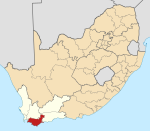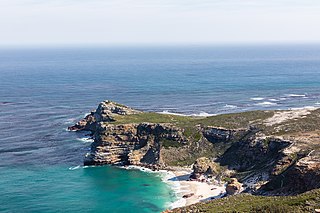
The Cape of Good Hope is a rocky headland on the Atlantic coast of the Cape Peninsula in South Africa.

Vasco da Gama, 1st Count of Vidigueira, was a Portuguese explorer and the first European to reach India by sea.

A slave rebellion is an armed uprising by enslaved people, as a way of fighting for their freedom. Rebellions of enslaved people have occurred in nearly all societies that practice slavery or have practiced slavery in the past. A desire for freedom and the dream of successful rebellion is often the greatest object of song, art, and culture amongst the enslaved population. Many of the events, however, are often violently opposed and suppressed by slaveholders.

Durban, nicknamed Durbs, is the third most populous city in South Africa after Johannesburg and Cape Town and the largest city in KwaZulu-Natal. Durban forms part of the eThekwini Metropolitan Municipality, which includes neighbouring towns and has a population of about 3.44 million, making the combined municipality one of the largest cities on the Indian Ocean coast of the African continent. Durban was also one of the host cities of the 2010 FIFA World Cup.

Triangular trade or triangle trade is trade between three ports or regions. Triangular trade usually evolves when a region has export commodities that are not required in the region from which its major imports come. It has been used to offset trade imbalances between different regions.

The Blockade of Africa began in 1808 after the United Kingdom outlawed the Atlantic slave trade, making it illegal for British ships to transport slaves. The Royal Navy immediately established a presence off Africa to enforce the ban, called the West Africa Squadron. Although the ban initially applied only to British ships, Britain negotiated treaties with other countries to give the Royal Navy the right to intercept and search their ships for slaves.

Signal Hill, or Lion's Rump, is a landmark flat-topped hill located in Cape Town, next to Lion's Head and Table Mountain.
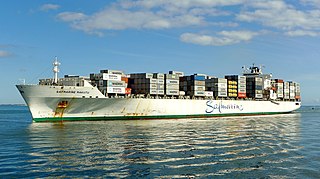
Safmarine, short for South African Marine Container Lines N.V., is a South African international shipping entity and former company offering container and break-bulk shipping services worldwide. It is now owned by its parent company Maersk Line.
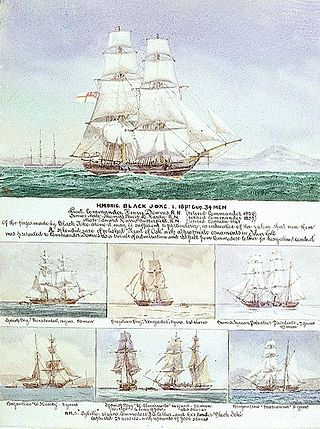
The West Africa Squadron, also known as the Preventative Squadron, was a squadron of the British Royal Navy whose goal was to suppress the Atlantic slave trade by patrolling the coast of West Africa. Formed in 1808 after the British Parliament passed the Slave Trade Act 1807 and based out of Portsmouth, England, it remained an independent command until 1856 and then again from 1866 to 1867.

Edward England was an Irish pirate. The ships he sailed on included the Pearl and later the Fancy, for which England exchanged the Pearl in 1720. His flag was the classic Jolly Roger — almost exactly as the one "Black Sam" Bellamy used — with a human skull above two crossed bones on a black background. Like Bellamy, England was known for his kindness and compassion as a leader, unlike many other pirates of the time.

USS LST-325 is a decommissioned tank landing ship of the United States Navy, now docked in Evansville, Indiana, US. Like many of her class, she was not named and is properly referred to by her hull designation.
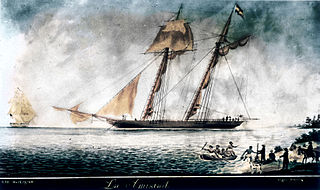
La Amistad was a 19th-century two-masted schooner, owned by a Spaniard colonizing Cuba. It became renowned in July 1839 for a slave revolt by Mende captives, who had been captured and sold to European slave traders, and illegally transported by a Portuguese ship from West Africa to Cuba in violation of existing European treaties against the Atlantic slave trade. Two Spanish plantation owners, Don José Ruiz and Don Pedro Montes, bought 53 captives, including four children, in Havana, Cuba, and were transporting them on the ship to their plantations near Puerto Príncipe. The revolt began after the schooner's cook jokingly told the slaves that they were to be "killed, salted, and cooked." Sengbe Pieh, a Mende man, also known as Joseph Cinqué, unshackled himself and the others on the third day and started the revolt. They took control of the ship, killing the captain and the cook. In the melee, three Africans were also killed.

African Queen was the name of two boats used in the 1951 movie The African Queen starring Humprey Bogart and Katharine Hepburn. It was filmed in the Belgian Congo on a tributary of the Congo River, and on the Nile in the Murchison Falls National Park in Uganda. Two boats were utilised, one in each location. One of the boats is now located in Key Largo, Florida and on February 18, 1992, was added to the U.S. National Register of Historic Places. The other is located in Jinja, Uganda.
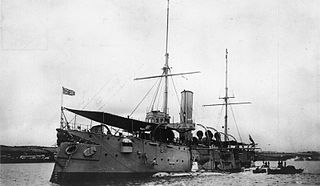
HMS Thames was a Mersey-class protected cruiser built for the Royal Navy (RN) in the 1880s. The ship was placed in reserve upon her completion in 1888 and was converted into a submarine depot ship in 1903. She was sold out of the navy in 1920 and was purchased by a South African businessman to serve as a training ship for naval cadets under the name SATS General Botha. The ship arrived in South Africa in 1921 and began training her first class of cadets in Simon's Town the following year. General Botha continued to train cadets for the first several years of World War II, but the RN took over the ship in 1942 for use as an accommodation ship under her original name. She was scuttled by gunfire in 1947 and is now a diveable wreck.
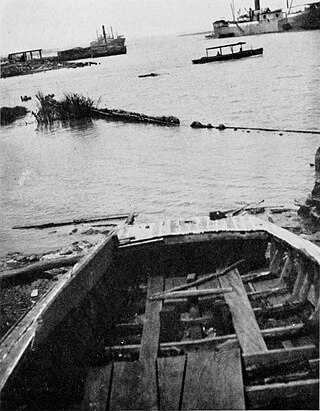
The schooner Clotilda was the last known U.S. slave ship to bring captives from Africa to the United States, arriving at Mobile Bay, in autumn 1859 or July 9, 1860, with 110 African men, women, and children. The ship was a two-masted schooner, 86 feet (26 m) long with a beam of 23 ft (7.0 m).

Africatown, also known as AfricaTown USA and Plateau, is a historic community located three miles (5 km) north of downtown Mobile, Alabama. It was formed by a group of 32 West Africans, who in 1860 were bought and transported against their will in the last known illegal shipment of slaves to the United States. The Atlantic slave trade had been banned since 1808, but 110 slaves held by the Kingdom of Dahomey were smuggled into Mobile on the Clotilda, which was burned and scuttled to try to conceal its illicit cargo. More than 30 of these people, believed to be ethnic Yoruba, Ewe, and Fon, founded and created their own community in what became Africatown. They retained their West African customs and language into the 1950s, while their children and some elders also learned English. Cudjo Kazoola Lewis, a founder of Africatown, lived until 1935 and was long thought to be the last survivor of the slaves from the Clotilda living in Africatown.
K'un-lun po were ancient sailing ships used by Austronesian sailors from Maritime Southeast Asia, described by Chinese records from the Han Dynasty. In the first millennium AD, these ships connected trade routes between India and China. Ships of this type were still in use until at least the 14th century.

Igbo Landing is a historic site at Dunbar Creek on St. Simons Island, Glynn County, Georgia. It was the setting of a mass suicide in 1803 by captive Igbo people who had taken control of their slave ship and refused to submit to slavery in the United States. The event's moral value as a story of resistance towards slavery has symbolic importance in African American folklore as the flying Africans legend, and in literary history.

Cape Spartel is a promontory in Morocco about 1,000 feet (300 m) above sea level at the entrance to the Strait of Gibraltar, 12 km west of Tangier. Below the cape are the Caves of Hercules.

The South African Naval College provides naval officer training to the South African Navy and is one of three officer training institutions within the South African National Defence Force, the equivalent of the Air Force Gymnasium and the Army Gymnasium





















